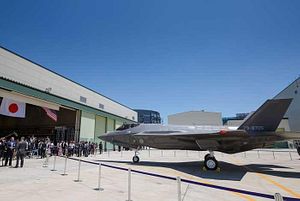The U.S. Navy has concluded its search efforts for a Japan Air Self-Defense Force (JASDF) fifth-generation Lockheed Martin Lightning II F-35A Joint Strike Fighter that crashed off northern Japan a month ago.
“A U.S. Navy salvage team aboard a contracted vessel completed its mission supporting search and recovery operations with the Japan Self-Defense Forces after locating debris from the downed JASDF F-35A off the coast of Japan, May 8,” a May 9 U.S. Navy statement reads.
The U.S. Navy had chartered a privately-owned deep-sea search vessel, the Singapore-operated Van Gogh, to help in the search efforts. The Van Gogh supported the Japan Agency for Marine-Earth Science and Technology research vessel Kaimei, equipped with a remote operating vehicle (ROV) that can dive to depths up to 3,000 meters, and the Japan Maritime Self Defense Force (JMSDF) submarine rescue ship JS Chiyoda, ASR-404.
“Working closely with JSDF forces, the salvage team deployed a U.S. Navy remotely operated vehicle, CURV [ Cable-controlled Undersea Recovery Vehicle] 21, to survey the area where debris was located,” the Navy said.
“Prior to the salvage team mission, guided-missile destroyer USS Stethem (DDG 63) and multiple P-8A Poseidon aircraft joined JSDF-led search efforts from Apr. 9-17, covering more than 5,000 square nautical miles.”
The crashed Joint Strike Fighter was one of four F-35A fighter jets that took off from Misawa Air Base for a training mission at 6:59 p.m., Japan time, on April 9. The aircraft disappeared from radar tracking systems at 7:27 p.m. on April 9 about 135 km (84 miles) east of Misawa Air Base, in the northern part of Japan’s main island of Honshu.
The April 9 incident marks the first crash of a F-35A.
According to a previous Pentagon statement, the primary U.S. search effort ended in the third week of April.
A search team recovered parts of the flight data recorder earlier this month. The retrieved part of the flight data recorder was heavily damaged. The exact discovery location is being kept secret for security reasons. So far, only a section of the missing F-35A’s tail was found on the ocean surface.
The commander of U.S. Pacific Air Forces, General Charles Brown, said last month that the aircraft had been located. However, U.S. Forces Japan denied that the aircraft had been found in subsequent statement.
The JASDF has grounded its entire fleet of 12 F-35A fighter jets and suspended pre-delivery flight tests of the 14th F-35A, assembled at the Mitsubishi Heavy Industries (MHI) F-35 Final Assembly and Check Out (FACO) facility in Nagoya.
































